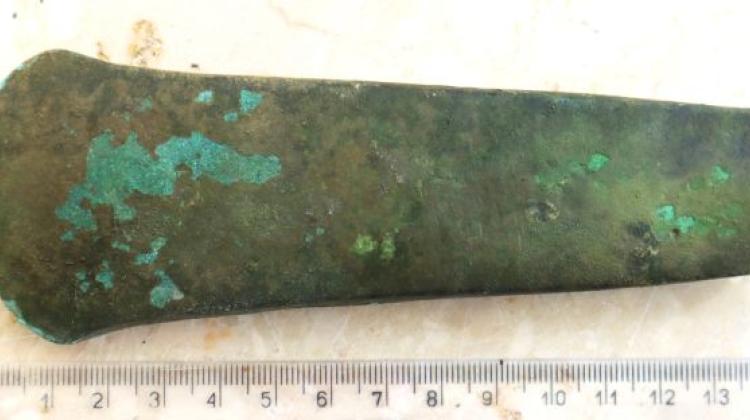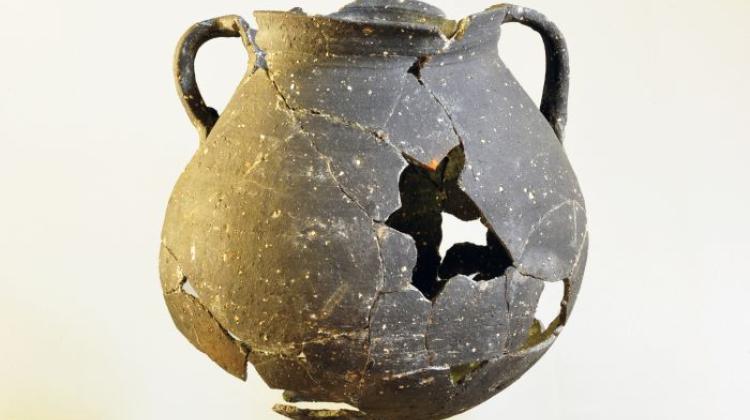Scientists explore Eastern Orthodox gothic catacombs
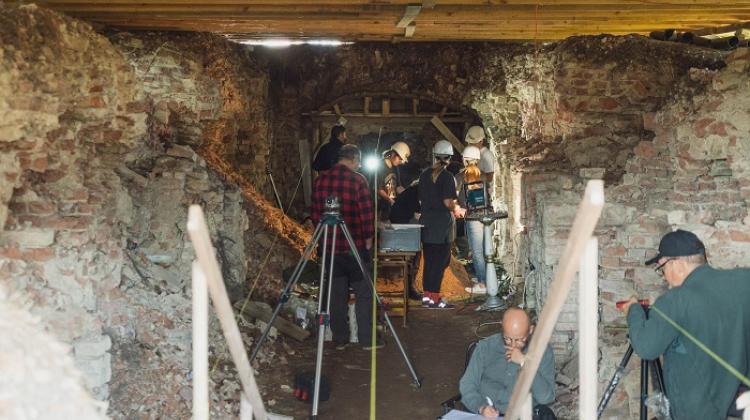 Interdisciplinary scientific research aimed at saving the catacombs of the Eastern Orthodox Monastery of the Annunciation of the Blessed Virgin Mary in Supraśl. Credit: University of Białystok
Interdisciplinary scientific research aimed at saving the catacombs of the Eastern Orthodox Monastery of the Annunciation of the Blessed Virgin Mary in Supraśl. Credit: University of Białystok
Scientists from several universities are conducting interdisciplinary research aimed at saving the catacombs of the Eastern Orthodox Monastery of the Annunciation of the Blessed Virgin Mary in Supraśl (Podlaskie Voivodeship).
'Due to the uniqueness of the object itself, our project will be very important for the history of Christianity, for the history of architecture, and for historical archaeology,’ says archaeologist Dr. Maciej Karczewski, a professor at the Faculty of History and International Relations of the University of Białystok, who supervises the archaeological work in the field.
The research is carried out under the agreement concluded by the Eastern Orthodox Monastery of the Annunciation of the Blessed Virgin Mary in Supraśl and the University of Białystok, the Białystok University of Technology, the Medical University of Białystok and the Christian Theological Academy in Warsaw. The project also has the support of the Military University of Technology and the Nicolaus Copernicus University in Toruń.
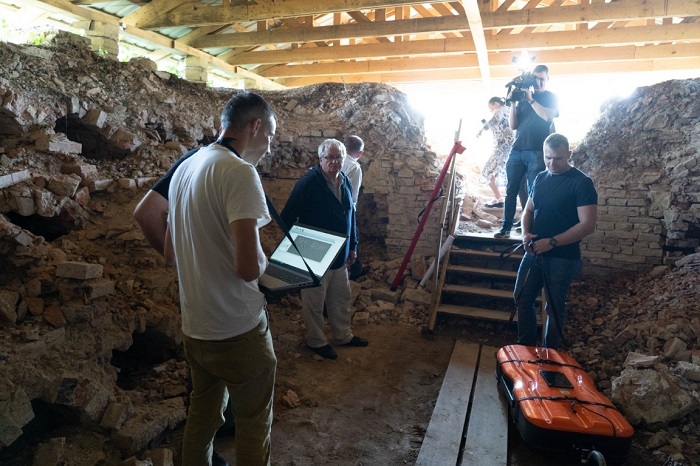
The catacombs located at the Monastery of the Annunciation of the Blessed Virgin Mary in Supraśl are among the oldest preserved elements of the monastery complex, which was built between 1532 and 1537. It is a Historical Monument and a unique object in Europe.
'The catacombs are tangible proof of the multicultural and multi-religious nature and greatness of Supraśl and this part of the Podlaskie Voivodeship in the 16th, 17th and 18th centuries, because they were built not only as a resting place for Supraśl monks, but also the benefactors of the monastery were buried here,’ says Dr. Karczewski.
The cooperation of several universities is aimed at 'learning about the history of the catacombs, preparing a program for securing this unique monument of Podlasie and Poland - Gothic catacombs of the Eastern rite - and, finally, securing and making this facility available to all interested visitors.’
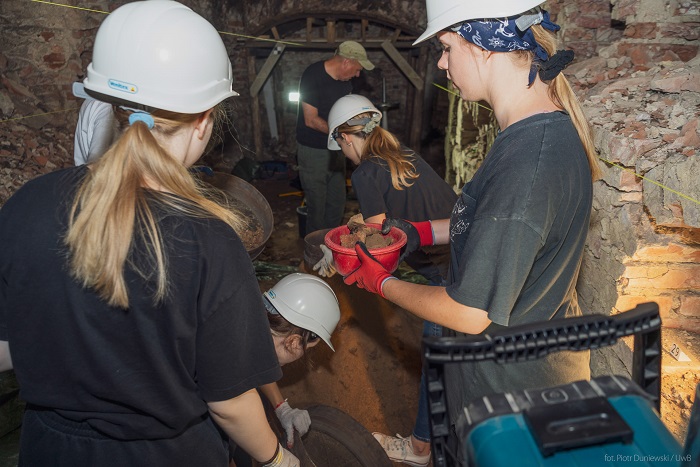
Employees and students of the Unit for Architecture of Local Cultures at the Faculty of Architecture of the Białystok University of Technology undertook to examine the ground around the facility. According to the head of the unit, Professor Jerzy Uścinowicz, a GPR from the Military University of Technology has been used because of its very high precision and the capability of identifying underground structures.
'The point is to check what the area of the cemetery is, what is around the catacombs, how close the earth graves were to the catacombs, so that in the future, when first design and then implementation work is carried out, we can preserve the peace of this place and avoid disturbing the existing burials,’ Uścinowicz says.
In addition to monks, people who left their mark on the history of the Republic of Poland were buried in the catacombs. 'This is the burial place of the elite of the Polish nobility,' says Dr. Maciej Karczewski. ‘The remains of eminent figures from the Chodkiewicz, Czartoryski, Sanguszko and Sapieha families rest here. There are members of the Siemaszka family, the Słucki family, the Tyszkiewicz family, the Massalski family, the Olelkowicz family and the Wiśniowiecki family.'
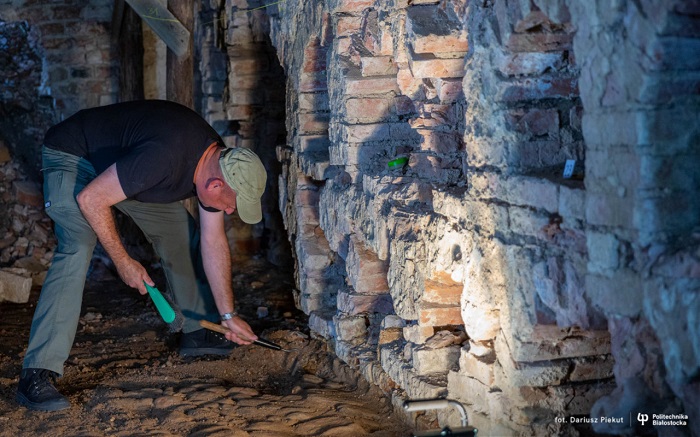
Archaeologists from the University of Białystok dug several excavations outside the catacombs to answer questions about the area of the object. 'We found corners, as well as traces left by workers who, at the end of the 19th or the beginning of the 20th century, dug up graves located on the northern side to strengthen the catacombs,' Karczewski says.
‘The workers did a construction excavation there, and the human bones, unfortunately without respect, were returned to this excavation. Researchers also found some excavations from 1984. It was then that the legendary research was carried out, often quoted in the literature, in not the best context, because it supposedly led to the deterioration of the condition of the catacombs, but the fact is that this was the first large research project and we use some of its results,’ Karczewski adds.
Excavations inside the catacombs revealed details of the structure of their foundations and traces of renovation carried out at the end of the 19th or the beginning of the 20th century. Karczewski contijnues: ’In addition, on the western side of the catacombs we have exposed the full structure of the wall. Until now, only overground pars were visible, i.e. burial niches. We now know that during the reconstruction of some of the catacombs, the floor level was raised, which is why the niches are placed so low. But we also have an entire stone foundation held together with lime mortar.’
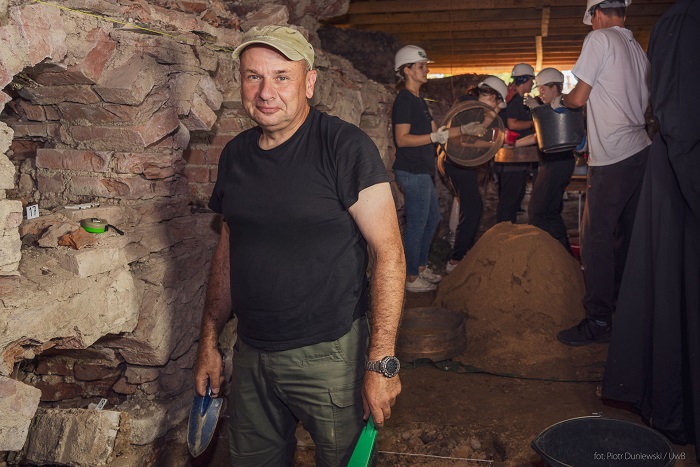
The excavations are currently being completed and researchers are beginning the analysis of the state of preservation of the crypts from an archaeological perspective.
The researchers also surveyed the geological substrate. Its analysis will be carried out by Professor Piotr Banaszuk from the Białystok University of Technology. In turn, scientists from the Faculty of Biology of the University of Białystok, after consultations with Professor Mirosława Kupryjanowicz and Dr. Danuta Drzymulska, a professor at the Professor, collect samples from each layer for analysis of the content of macroscopic organic remains, i.e. remains of plants and animals.
'The vice-rector of our university, Professor Izabela Święcicka, is personally interested in something that will be a complete novelty when it comes to historical archaeology, i.e. biochemical research on the bacterial flora in the catacombs. The identification of animal remains will also be very important. I am talking about the insects that fed in these place. This research can tell us a lot,' says Dr. Karczewski.
In parallel with archaeological research, an architectural inventory of the interior of the catacombs and the burial crypts is being carried out. The research will result not only in learning about the past of the catacombs and developing the most effective method of protecting them against further destruction, but also enable visits to parts of the catacombs.
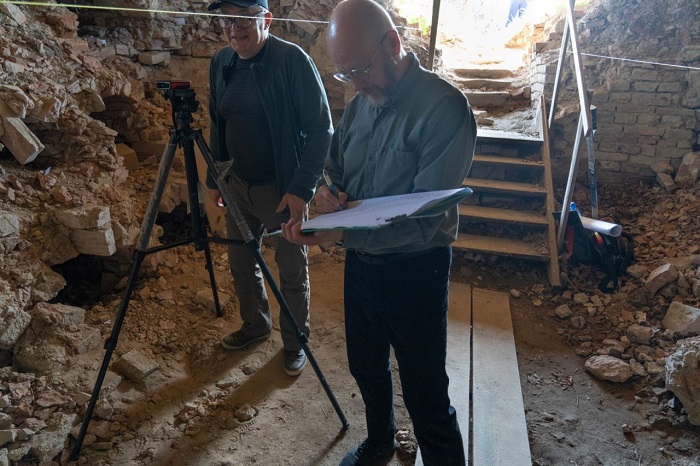
The permit to conduct research in the catacombs in Supraśl is valid until next year. 'Next year, the catacombs must be secured, and then, in accordance with the declaration of Bishop Andrzej of Supraśl, they are to serve everyone. It is to be both a place of worship and an important place on the tourist trail of Podlasie. For this to happen, design work must be carried out and tourist infrastructure must be built. We still have a few years of work ahead of us,' Karczewski says.
'I think that due to the uniqueness of the catacombs, because it is the only structure of this type in north-eastern Poland, our work will be very important for the history of Christianity, for the history of architecture, for historical archaeology on a nationwide, and I could even say, Central European scale,’ concludes Dr. Karczewski.
The Church of the Resurrection of Christ, with extensive catacombs and nearly 200 burial niches beneath it, was built several dozen years after the monks settled in Supraśl, sometime between 1532 and 1557. The church was a half-timbered building. In the first decades of the 19th century, the ruined Church of the Resurrection was demolished for safety reasons. The catacombs were covered, but in the mid-1980s they were exposed for archaeological work. The catacombs, exposed and poorly secured, fell prey to curious explorers and ordinary vandals.
PAP - Science in Poland
amk/ bar/ kap/
tr. RL
Przed dodaniem komentarza prosimy o zapoznanie z Regulaminem forum serwisu Nauka w Polsce.



